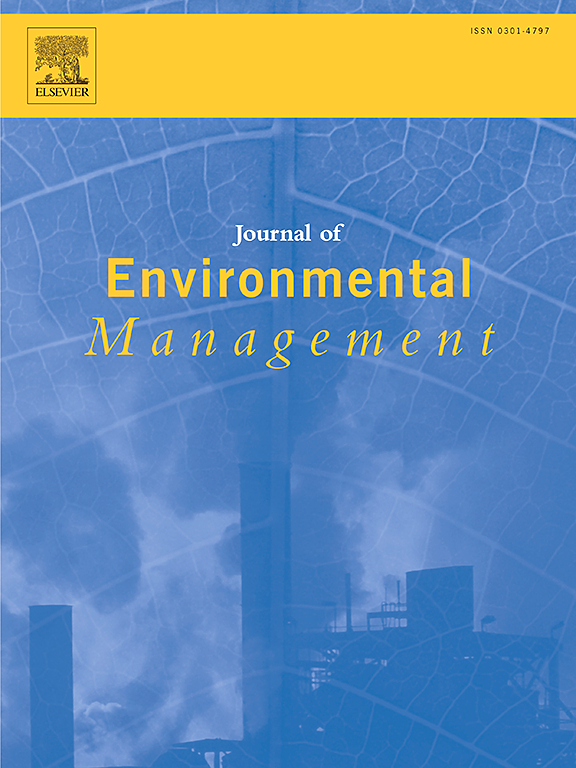Biocrust effects on soil stability and hydrodynamic erosion in southern China's red soil
IF 8
2区 环境科学与生态学
Q1 ENVIRONMENTAL SCIENCES
引用次数: 0
Abstract
Biocrusts are essential for regulating soil erosion and hydrologic processes. However, the response of biocrusts to soil aggregate stability, erosion processes and their hydrodynamic characteristic in eroded red soil remains underexplored. This study investigated the effects of biocrust cover (BC) on the erosion processes, flow hydrodynamics, and soil aggregate stability under varying rainfall intensities (RI). Simulated rainfall experiments were conducted on bare and BC red soil plots under four RI (0.5, 1, 1.5, and 2 mm min−1). Structural equation modeling (SEM) was employed to identify the direct and indirect pathways through which BC affects erosion. The results showed that BC significantly reduced runoff and erosion rate and improved soil stability (P < 0.05), as indicated by increased mean weight diameter and geometric mean diameter values. A strong linear relationship was observed between runoff rate and erosion rate (R2 = 0.834–0.944), indicating that soil erosion on BC plot is primarily governed by runoff processes. Stream power (VP) was strongly correlated with both runoff rate (R2 = 0.994) and erosion rate (R2 = 0.797), suggesting its suitability as a key predictor of erosion dynamics. Importantly, soil aggregate loss exhibited a bimodal distribution, characterized by two distinct peaks in particle size, with enrichment in <0.5 mm and 1–2 mm aggregates. SEM further revealed that increased BC (path coefficients = 0.60), enhanced aggregate stability, and decreased stream erosive power were key mechanisms for reducing soil erosion. These findings provide novel insights into the ecohydrological functions of biocrusts and highlight their practical potential as a nature-based solution for erosion control and land restoration in subtropical red soil regions, informing sustainable land management strategies.

华南红壤生物结皮对土壤稳定性和水动力侵蚀的影响
生物结皮对调节土壤侵蚀和水文过程至关重要。然而,红壤侵蚀区生物结皮对土壤团聚体稳定性、侵蚀过程及其水动力特性的响应尚不清楚。研究了不同降雨强度下生物覆层对土壤侵蚀过程、水流动力学和团聚体稳定性的影响。在4种RI(0.5、1、1.5和2 mm min - 1)条件下,对裸红壤和BC红壤进行了模拟降雨试验。采用结构方程模型(SEM)确定了BC影响侵蚀的直接和间接途径。结果表明,BC显著降低了径流和侵蚀速率,提高了土壤稳定性(P <;平均重量直径和几何平均直径值的增加表明,0.05)。径流速率与侵蚀速率呈较强的线性关系(R2 = 0.834 ~ 0.944),表明BC样地的土壤侵蚀主要受径流过程的控制。径流功率(VP)与径流速率(R2 = 0.994)和侵蚀速率(R2 = 0.797)均具有较强的相关性,表明其可作为侵蚀动态的重要预测因子。重要的是,土壤团聚体损失呈双峰分布,在粒径上有两个明显的峰值,在0.5 mm和1-2 mm团聚体中富集。SEM进一步表明,增加BC(路径系数= 0.60)、提高团聚体稳定性和降低河流侵蚀力是减少土壤侵蚀的关键机制。这些发现为生物结皮的生态水文功能提供了新的见解,并突出了它们作为亚热带红壤地区侵蚀控制和土地恢复的自然解决方案的实际潜力,为可持续土地管理战略提供了信息。
本文章由计算机程序翻译,如有差异,请以英文原文为准。
求助全文
约1分钟内获得全文
求助全文
来源期刊

Journal of Environmental Management
环境科学-环境科学
CiteScore
13.70
自引率
5.70%
发文量
2477
审稿时长
84 days
期刊介绍:
The Journal of Environmental Management is a journal for the publication of peer reviewed, original research for all aspects of management and the managed use of the environment, both natural and man-made.Critical review articles are also welcome; submission of these is strongly encouraged.
 求助内容:
求助内容: 应助结果提醒方式:
应助结果提醒方式:


